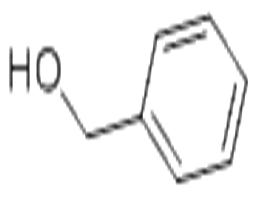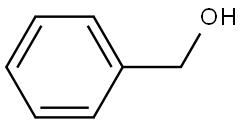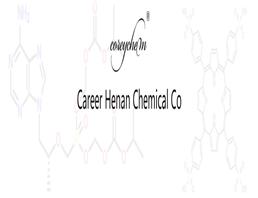
Benzyl alcohol
| Price | $2550 | $2500 |
| Package | 500KG | 1000KG |
| Min. Order: | 500KG |
| Supply Ability: | 100MT/month or Customized |
| Update Time: | 2019-07-06 |
Product Details
| Product Name: Benzyl alcohol | CAS No.: 100-51-6 |
| EC-No.: 202-859-9 | Min. Order: 500KG |
| Purity: 99.5% | Supply Ability: 100MT/month or Customized |
| Release date: 2019/07/06 |
SP037
| Product Name: | Benzyl alcohol |
| Synonyms: | (Hydroxymethyl)benzene;alcoolbenzylique;Bentalol;benzalalcohol;Benzalcohol;Benzenemethan-lo;benzenmethanol;Benzoyl alcohol |
| CAS: | 100-51-6 |
| MF: | C7H8O |
| MW: | 108.14 |
| EINECS: | 202-859-9 |
| Product Categories: | Industrial/Fine Chemicals;Alcohols;Aromatic;Chemical Class;ACS and Reagent Grade Solvents;ACS Grade;ACS Grade Solvents;Amber Glass Bottles;Puriss p.a.;Solvent Bottles;Solvent by Application;Solvent Packaging Options;Solvents;Aspalathus linearis (Rooibos tea);Carbon Steel Flex-Spout Cans;Nutrition Research;Ocimum basilicum (Basil);Phytochemicals by Plant (Food/Spice/Herb);ReagentPlus;ReagentPlus Solvent Grade Products;Sambucus nigra (Elderberry);Semi-Bulk Solvents;Vaccinium macrocarpon (Cranberry);Vaccinium myrtillus (Bilberry);GC Headspace Solvents;Analytical Reagents;Analytical/Chromatography;Chromatography Reagents &;GC Solvents;Solvents for GC applications;Building Blocks;C7 to C8;Chemical Synthesis;Organic Building Blocks;Oxygen Compounds;Solvent |
| Mol File: | 100-51-6.mol |
 |
|
| Benzyl alcohol Chemical Properties |
| Melting point | -15 °C |
| Boiling point | 205 °C |
| density | 1.045 g/mL at 25 °C(lit.) |
| vapor density | 3.7 (vs air) |
| vapor pressure | 13.3 mm Hg ( 100 °C) |
| refractive index | n20/D 1.539(lit.) |
| FEMA | 2137 | BENZYL ALCOHOL |
| Fp | 201 °F |
| storage temp. | 2-8°C |
| solubility | H2O: 33 mg/mL, clear, colorless |
| form | Liquid |
| color | APHA: ≤20 |
| Relative polarity | 0.608 |
| explosive limit | 1.3-13%(V) |
| Water Solubility | 4.29 g/100 mL (20 ºC) |
| Merck | 14,1124 |
| BRN | 878307 |
| InChIKey | WVDDGKGOMKODPV-UHFFFAOYSA-N |
| CAS DataBase Reference | 100-51-6(CAS DataBase Reference) |
| NIST Chemistry Reference | Benzyl alcohol(100-51-6) |
| EPA Substance Registry System | Benzenemethanol(100-51-6) |
| Safety Information |
| Hazard Codes | Xn,T |
| Risk Statements | 20/22-63-43-36/37/38-23/24/25-45-40 |
| Safety Statements | 26-36/37-24/25-23-53 |
| RIDADR | UN 1593 6.1/PG 3 |
| WGK Germany | 1 |
| RTECS | DN3150000 |
| F | 8-10-23-35 |
| TSCA | Yes |
| HS Code | 29062100 |
| Hazardous Substances Data | 100-51-6(Hazardous Substances Data) |
| Benzyl alcohol Usage And Synthesis |
| Overviews | Phenylcarbinol is also known as benzyl alcohol. Its chemical formula is C6H5CH2OH and its density is 1.045 g/mL at 25 ° C (lit). Benzylalcohol is one of the simplest fatty alcohol containing phenyl. It can be seen as benzene substituted by hydroxymethyl, or methyl alcohol substituted by phenyl. It is a colorless transparent sticky liquid with faint aroma. Sometimes benzyl alcohol is placed for a long time, it will smells like bitter almond flavor because of oxidation. Polarity, low toxicity and low steam, so it is used as alcohol solvent. It is combustible, and slightly soluble in water (about 25ml of water soluble 1 gram of benzyl alcohol). It is miscible with ethanol, ethyl ether, benzene, chloroform and other organic solvents. Benzyl alcohol mainly exists in the form of free or ester in essential oil, such as jasmine oil, ylang-ylang oil, jasmine oil, hyacinth oil, sesame oil, hyacinths balsam, peru balsam and tolu balsam, which all contain this ingredient. Benzyl alcohol should not be stored for a long time. It can be slowly oxidized to benzaldehyde and anisole in the air.Therefore benzyl alcohol products often smell like almond aroma with characteristic of benzaldehyde. In addition, benzyl alcohol is also easily oxidized to benzoic acid by many kinds of antioxidants such as nitric acid. Benzyl alcohol has a narcotic effect. It has a strong stimulating effect on the eye, skin and respiratory system. Ingestion, inhalation or skin contact is harmful to the body. One will feel headache, nausea, vomiting, gastrointestinal irritation, convulsion, coma after ingestion of benzyl alcohol. It can lead to death under serious condition. Median lethal dose in rats is 1230mg/kg. When benzyl alcohol enters the body, it is firstly oxidized to benzoic acid and then condenses with glycine in the liver to form hippuric acid and excrets. Intramuscular injection using benzyl alcohol as solvent may result in gluteal muscle contracture. |
| Function and Use | Benzyl alcohol can be used as preservative of ointments, desiccant of fibers, nylon and plastic film, stabilizer of PVC, photographic developer, solvent of acetate fiber, inks, coatings, paints, epoxy paints, dyes, casein, gelatin, shellac and the like, and intermediate to prepare the benzyl esters or ethers. It also can be used to prepare spices and flavorings (mostly benzyl alcohol ester of fatty acids), which can be used as additive of soaps, perfume, cosmetic and other products. Since the quartz and wool fibers have almostsame refractive index, it can be used to identificate them. In addition, it is used as fixative and diluent inperfume industry. The hydroxy of benzyl alcohol is very lively. It can react with benzene to generate diphenyl methane, and with acrylonitrile to generate N-benzyl acrylamide (Ritter reaction). It also can react with phosphorus halide and halogen acid to generate benzyl halide. Benzyl halide and benzyl alcohol are benzylation (phenylmethyl) reagent. It can be used as benzyl-protecting group for carboxylic acid and alcohol hydroxy. Benzyl-protecting group can be removed by hydrogenation easily. In addition, benzyl alcohol can also be easily oxidized to benzoic acid by a variety of oxidants. If nitric acid is used, it can be oxidized to aldehyde or acid with different concentration and temperature. While taking penicillin injections, benzyl alcoholis always used as anesthesia in order to prevent the patient from pain, in which conditions the pain is not too strong. So benzyl alcohol is also known as “painless water”. However, a common clinical side effect is founded: gluteus contracture disease. This is because that benzyl alcohol is not easy to be absorbed by human body. It will chronically accumulate at the injection site, and lead to necrosis of surrounding muscles. In severe cases, it may affect the growth of bone. In 2005, the state food and drug administration issued a ban on benzyl alcohol used as the solvent of penicillin injections. |
| Chemical Property | Transparent colorless liquid. Slightly aromatic odor. Slightly soluble in water, and miscible with alcohol, ether, chloroform and so on. |
| Uses | 1.Benzyl alcohol can be used as raw materials and fixatives of spice, pharmaceutical raw materials and anesthetics, preservatives, coloring additives, coatings and solvent of inks. It also can be used to make ballpoint oil. 2.It can be used as chromatographic analysis reagent. And it also can be used in organic synthesis. 3.It can be used for the preparation of sesame oil, drugs and the like. It also can be used as the solvent and fixatives of spice. 4.Benzyl alcoholexists in many fragrant essential oils. Then it can be used as condensing agent with benzyl acetate in jasmine, gardenia, lilac, ylang-ylang, tuberose, hyacinth, acacia and other floral type. It has the fixative effect too. It is often used as the solvent to dissolve artificial musk and other spices. In addition, it can be used as food spices inedible flavor, like cherries, grapes, honey, orange, raspberry, walnut, vanilla. 5.Benzyl alcohol is the edible spice that is temporarily allowed to use. It is mainly used in almonds, oranges, cherries, grapes, strawberries and other fruit-based flavor. The dosage of benzyl alcohol is as the normal production needs. It is usually 1200mg/kg in the chewing gum, 220mg/kg in baked foods, 160mg/kg in cold drinks, 47mg/kg in the candy, and 15mg/kg in soft drinks. 6.Benzyl alcohol is a very useful fixative. It is the indispensable spices to allocate jasmine, polianthes tuberosa, ylang-ylang and other flavorings. It can be used to prepare soaps and daily cosmetics flavorings. But benzyl alcohol can be naturally and slowly oxidized. Part of benzyl alcohol will be oxidized to benzaldehyde and benzyl ether, which makes commercial products with almond scent. It should not be stored for a long time. Benzyl alcohol is widely used in the production of industrial chemicals. It can be used as coating solvent, photographic developer, PVC stabilizer, medicine, solvent of synthetic resin, solvent of vitamin B injection, preservative of unguent or liquid. It also can be used as desiccant of nylon, fiber and plastic film, solvent of dye, cellulose ester and casein, intermediate to prepare benzyl esters or ethers. Meanwhile, it is widely used as pen oil, paint solvent, etc. 7.GB 2760--1996 stipulates that benzyl alcohol can be used as food spices temporarily. It also can be used as fixative agent and grease solvent. As spices, it is mainly used for the preparation of berries, nuts and other flavors. 8.It can be used in organic synthesis. It can be used as solvent of gelatin, casein (heat), cellulose acetate and shellac and the like, microscope embedding material. It also can be used to determinate the contents of vitamin B12. |
| Production Method | 1.Benzyl chloride with potassium or sodium is heated for a long timg, and hydrolyzes to yield benzyl alcohol. 2.Benzaldehyde in methanol and sodium hydroxide solution react to benzyl alcohol at 65~75 ℃. The product has high purity. 3.Using benzyl chloride as raw materials, it is heated and hydrolyzes to yield benzyl alcohol in the presence of the sodium catalyst. Specification of spices benzyl alcohol(QB792-81): the relative density of 1.041-1.046; refractive index of 1.538-1.541; boiling range 203-206℃ and distillate volume more than 95%; dissolving completely in 30 volumes of distilled water; containing more than 98 percent of alcohol; chlorine test (NF) as the side reaction. Raw material consumption quota: benzyl chloride 1600kg/t; soda ash 1000kg/t. 4.Benzyl alcohol exists naturally in orange flower, ylang-ylang, jasmine, gardenia, acacia, lilac and hyacinth. Benzyl chloride or benzaldehyde is used as raw materials to prepare benzyl alcohol in the industry. 5.Add chlorobenzyl to 12% sodium carbonate solution, heat to 93 ℃ and stir for 5h. Then warm the mixture to 101~103℃ and react for 10h. After the reaction, cool it to the room temperature, and add salt to saturation. After still standing for stratification, take the upper liquid and get crude products through pressure distillation. Then refine to gain the target products. The yield is 70%~72%. C6H5CH2Cl+H2O[Na2CO3]→C6H5CH2OH+NaCl+CO2↑ In the presence of sodium hydroxide, formaldehyde and benzaldehyde react to produce benzyl alcohol by disproportionation reaction. C6H5CHO+HCHO[NaOH]→C6h5CH2OH+HCOONa |
| Chemical Properties | colourless liquid |
| Uses | antimicrobial, antipruritic |
| Definition | ChEBI: An aromatic alcohol that consists of benzene bearing a single hydroxymethyl substituent. |
| Uses | manufacture of other benzyl Compounds. Pharmaceutic aid (antimicrobial). Solvent for gelatin, casein (when hot), solvent for cellulose acetate, shellac. Used in perfumery and in flavoring (mostly in form of its aliphatic esters). In microscopy as embedding material. |
| General Description | A clear colorless liquid with a pleasant odor. Slightly denser than water. Flash point 194°F. Boiling point 401°F. Contact may irritate skin, eyes, and mucous membranes. May be slightly toxic by ingestion. Used to make other chemicals. |
| Air & Water Reactions | Slightly soluble in water. |
| Reactivity Profile | Attacks plastics. [Handling Chemicals Safely 1980. p. 236]. Acetyl bromide reacts violently with alcohols or water [Merck 11th ed. 1989]. Mixtures of alcohols with concentrated sulfuric acid and strong hydrogen peroxide can cause explosions. Example: an explosion will occur if dimethylbenzylcarbinol is added to 90% hydrogen peroxide then acidified with concentrated sulfuric acid. Mixtures of ethyl alcohol with concentrated hydrogen peroxide form powerful explosives. Mixtures of hydrogen peroxide and 1-phenyl-2-methyl propyl alcohol tend to explode if acidified with 70% sulfuric acid [Chem. Eng. News 45(43):73 1967; J, Org. Chem. 28:1893 1963]. Alkyl hypochlorites are violently explosive. They are readily obtained by reacting hypochlorous acid and alcohols either in aqueous solution or mixed aqueous-carbon tetrachloride solutions. Chlorine plus alcohols would similarly yield alkyl hypochlorites. They decompose in the cold and explode on exposure to sunlight or heat. Tertiary hypochlorites are less unstable than secondary or primary hypochlorites [NFPA 491 M 1991]. Base-catalysed reactions of isocyanates with alcohols should be carried out in inert solvents. Such reactions in the absence of solvents often occur with explosive violence [Wischmeyer 1969]. |
| Health Hazard | Inhalation of vapor may cause irritation of upper respiratory tract. Prolonged or excessive inhalation may result in headache, nausea, vomiting, and diarrhea. In severe cases, respiratory stimulation followed by respiratory and muscular paralysis, convulsions, narcosis and death may result. Ingestion may produce severe irritation of the gastrointestinal tract, followed by nausea, vomiting, cramps and diarrhea; tissue ulceration may result. Contact with eyes causes local irritation. Material can be absorbed through skin with anesthetic or irritant effect. |
| Fire Hazard | Benzyl alcohol is combustible. |
| Benzyl alcohol Preparation Products And Raw materials |
| Preparation Products | N5-[imino(phosphonoamino)methyl]L-ornithine -->Benzyl benzoate-->5-(BENZYLOXY)-1H-PYRROLO[3,2-B]PYRIDINE-2-CARBALDEHYDE-->3-AMINO-5-FLUOROPYRIDINE-->4,6-Diamino-2-pyrimidinol-->6-O-Benzylguanine-->Benzyl acetate-->PHOSPHO-L-ARGININE SODIUM-->CYCLOPROTHRIN-->3-Amino-5-hydroxypyridine-->5-(BENZYLOXY)PYRIDIN-3-AMINE-->DIBENZYL DIISOPROPYLPHOSPHORAMIDITE-->Benzyl formate-->4-(Benzyloxy)pyridine N-oxide-->4-BENZYLOXY-5-BROMO-2-CHLOROPYRIMIDINE-->6-benzylaminopurine-->4-BENZYLOXY-2-CHLOROPYRIMIDINE-->6-BENZYLOXYPURINE-->4-BENZYLOXY-2(1 H)-PYRIDONE-->scavenger of fabric maculae-->3-(BENZYLOXY)-5-BROMOPYRIDINE-->2 , 4-BIS(BENZYLOXY)-5-BROMOPYRIMIDINE-->AZOBENZENE-->GUSPERIMUS-->5,12-DIHYDRO-5,7,12,14-TETRAZAPENTACENE-->Benzyl cinnamate-->Benzyl isobutyrate-->Benzyl propionate-->Benzyl 2-chloroacetate-->Benzyl ether-->Phenylephrine hydrochloride -->Benzenemethanol, ar-methyl-, acetate-->BENZHYDRYL B-CHLOROETHYL ETHER-->Methyl benzenesulfonate-->Diphenhydramine-->Benzyl butyrate-->BENZYL TIGLATE-->BENZYL BUTYL ETHER-->Phenyl-methyl -hydroxybenzenebutanoate-->BENZYL ISOVALERATE |
| Raw materials | Toluene-->Potassium carbonate-->Sodium carbonate-->Chlorine-->Benzyl chloride-->Benzaldehyde-->Clove oil |
Company Profile Introduction
Established in 2014,Career Henan Chemical Co. is a manufacturerspecializing in the sale of fine chemicals.
Mainly deals in the sales of:
Pharmaceutical intermediates
OLED intermediates:
Pharmaceutical intermediates;
OLED intermediates;
You may like
Recommended supplier
| Product name | Price | Suppliers | Update time | |
|---|---|---|---|---|
| 3.00/1kg |
VIP4Y
|
Nanjing Deda New Material Technology Co., Ltd
|
2024-04-12 | |
| $0.00/1kg |
VIP1Y
|
Shaanxi TNJONE Pharmaceutical Co., Ltd
|
2024-04-01 | |
| $3.00/1kg |
VIP1Y
|
Shanghai Aosiris new Material Technology Co., LTD
|
2024-03-27 | |
| $31.00/1kg |
VIP1Y
|
Henan Fengda Chemical Co., Ltd
|
2024-03-25 | |
| $80.00/1kg |
VIP1Y
|
hebei hongtan Biotechnology Co., Ltd
|
2024-03-15 | |
| $11.80/10kg |
VIP1Y
|
Shandong Juchuang Chemical Co., LTD
|
2024-03-14 | |
| $35.00/1kg |
VIP1Y
|
Sigma Audley
|
2024-02-27 | |
| $10.00/1kg |
VIP1Y
|
Wuhan Xinhao Biotechnology Co., Ltd
|
2024-02-23 | |
| $0.00/500ml |
VIP1Y
|
Biopole Pharmatech Co., Ltd.
|
2024-02-06 | |
| $10.00/1kg |
VIP1Y
|
Nantong Guangyuan Chemicl Co,Ltd
|
2023-11-17 |
- Since: 2014-12-17
- Address: No.967,15th Floor,Unit 7, Building 1, No.70 of DianChang Road, High-tech Development Zone, Zhengzho
INQUIRY
杨俊青
15093356674
sales@coreychem.com
15093356674
sales@coreychem.com



![Glycine, N-[2-(3,4-dihydro-5-Methyl-2,4-dioxo-1(2H)-pyriMidinyl)acetyl]-N-[2-[[(9H-fluoren-9-ylMethoxy)carbonyl]aMino]ethyl]-](https://img.chemicalbook.com/ProductImageEN/2018-7/Large/bb7fc27f-3114-450c-b91b-4c83ac8fa544.png)



 China
China